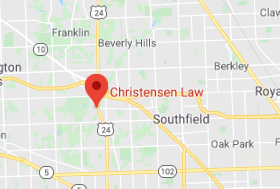Chronic traumatic encephalopathy (CTE), the degenerative brain disease believed to be directly linked to concussions and repeated trauma to the head, is most commonly associated with the National Football League (NFL). Understanding CTE is imperative for traumatic brain in jury victims. CTE has been found in the brains of dozens of former NFL players. It is only after an athlete’s death, however, that CTE can be officially diagnosed. Suspecting the affliction, many professional football players have had their brains donated to science after their deaths in an effort to further research about this disease. But it’s not only football players – professional soccer players, swimmers, and race car drivers who have experienced head injuries are also making promises to donate their brains to scientific research after their deaths.
Diagnosis and Symptoms of CTE
CTE symptoms do not typically appear until years after the brain trauma has occurred, according to Boston University’s CTE Center. One of the most unfortunate elements of CTE though, however, is that the disease can only be diagnosed for certain after death. While a potential sufferer is still alive, the symptoms can include:
- Erratic behavior
- Impulsive behavior
- Aggression
- Mood swings
- Violent tendencies
- Depression
- Difficulty concentrating
How Does CTE Develop?
Concussions are difficult to diagnose in general, which is why so many athletes often go right back into game play after a hit to the head, a collision with another player, or a bad fall. This makes the players susceptible to serious traumatic brain injuries, particularly among high school athletes. The NFL has become far more diligent about testing players for a concussion after a hard hit, but the fact remains that these players suffer head injuries over and over again throughout their years of game play. CTE is not a surprising diagnosis for many of them.
Many concussion symptoms resolve themselves within a few weeks, but for some head injury sufferers, the symptoms can last for months or years. This is known as post-concussion syndrome. The syndrome, though, is typically known to resolve before CTE symptoms begin to appear. Ultimately, the takeaway is that CTE could be festering in the brain after so many hits to the head, but science has yet to identify how to stop the disease in its tracks, cure it, or at the very least, temper it.
Should You Worry About CTE?
The U.S. National Electronic Injury Surveillance System reports that the top five sports for concussions, in order, are: football, cycling, basketball, soccer, and baseball. If your youth, teen, or college-aged child plays any of these contact sports, CTE is of course a possibility. While one concussion does not indicate a stained future, it is essential that any head injuries be properly diagnosed by a brain specialist and given time to heal.
Christensen Law – Your Traumatic Brain Injury Attorney
If you have suffered a traumatic brain injury at the hands of someone else’s negligence, or if you were misdiagnosed with a concussion that has led to more serious health problems, hire an attorney who is experienced in traumatic brain injury cases. Talk to Michigan traumatic brain injury attorney David Christensen about handling your case.





